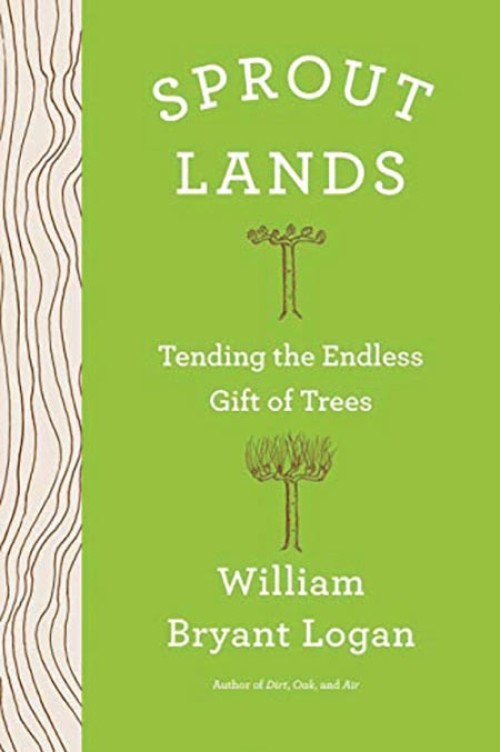by William Bryant Logan
W.W. Norton & Company, 2019
In his most recent outing, author William Bryant Logan travels far afield to rediscover the lost tradition of coppice culture – a neglected land management system that fueled human life for millennia. In this system, “coppicing” involved repeatedly harvesting new growth from the “stool” or stump of a tree. Multiple sprouts from each base, powered by a tree-size root system, can be harvested within years rather than decades, as when a tree is grown from seed. A “pollard,” a similar practice, is typically cut at approximately 6 feet; shoots spring from the top or “boiling” in a profusion of multiple stems that can be one to hundreds of years old.
The basic premise of the book is that rural inhabitants once had a reciprocal relationship with the living world that was largely lost with the disappearance of the commons and industrialization. Coppice culture provides the lens through which Logan examines this altered relationship with the land.
“Once, farmers and rural people knew how to prune hazel to foster abundance: both of edible nuts and of straight, strong, flexible rods for bridges, walls, and baskets. Townspeople felled their beeches to make charcoal to fuel ironworks. Shipwrights shaped oaks to make hulls. No place could prosper without its inhabitants knowing how to cut their trees so they would sprout again,” writes Logan.
A working arborist and a frequent contributor to The New York Times, Logan draws on exhaustive reading, observation, and discussions with practitioners whom he encounters in areas where coppice is still part of the landscape. Logan rambles from the East Coast to the West Coast and through a half-dozen countries; he shares a series of anecdotes, including pollarding plane trees at the Metropolitan Museum of Art and tending a dying willow made famous by E.B. White as the “salvation of New York.” He visits the ancient pollards in England’s Somerset Levels and encounters a ring of living stools from a single, 2,000-year-old linden tree in Gloucestershire. He describes satoyoma woodlands, a traditional coppice system being reestablished in Japan, and visits farms high in the steep Norwegian fjordlands where ash coppice is used for forage. He spends time in the village of Leitza, Spain where ancient, oak pollards were abandoned and growing untended for centuries before communities began learning how to restore them.
Logan has an intimate knowledge of trees and explains complex biological processes with contemplative insight. His passion is undeniable: “I say the words with love and reference: coppice and pollard.” The art of managing a coppice wood, he notes, requires no large clearing; the sequential, rhythmic cutting of coppice fells every 3 to 20 years create light, edge, and stand structure that encourage biodiversity and habitat.
Although foresters and arborists share a knowledge and affinity for trees, we aren’t always of the same mind. As a forester, it is hard to see how coppice management can be implemented on any scale in the northern forest region. The author’s vision, however, expands our historic understanding of anthropogenic influences on trees and offers an alternative for a living, responsive relationship with our woodlands. According to Logan, these older, coppiced woodlands were driven and sustained not by extraction but by mutual benefit. “In the new picturesque landscape, man became the spectator of an idea of nature that he himself had made in the image of a primordium that never existed. In fact, there likely never was an untouched forest,” he claims. Humankind is twined with nature and Logan quotes Thoreau: “Shall man then despair? Is he not a sprout-land too after never so many searings and witherings?”


